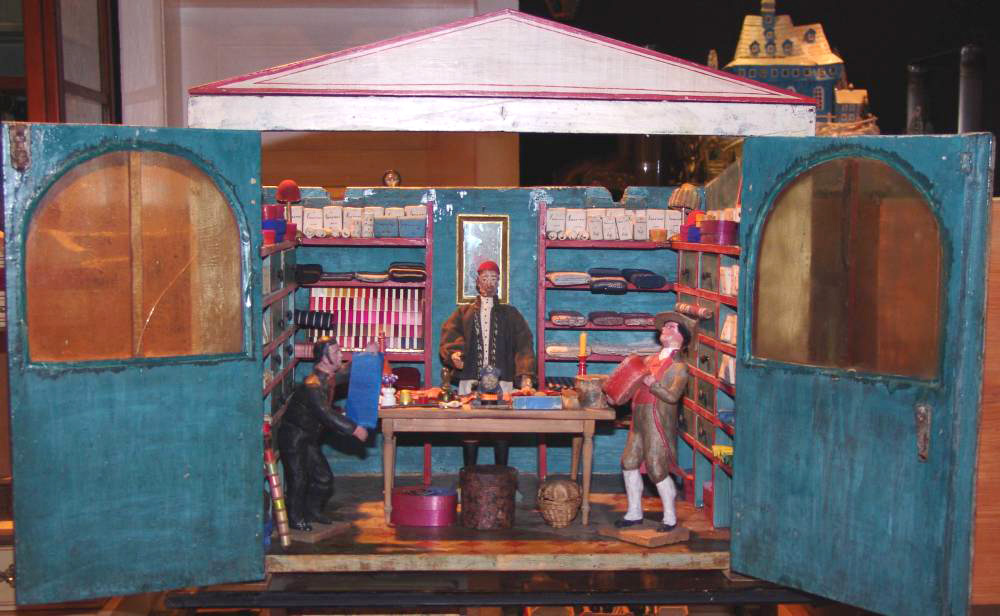History of the small stores
Shops, merchants' shops, storehouses, colonial goods, or mixed goods were originally designations for retail companies in the "real world", which are nowadays called nostalgic retrospect mostly "Aunt-Emma-Laden". Older department stores are mostly designed as doll shops, for example, with dolls and merchandise miniatures. Such shops are mostly known since the early nineteenth century and, like the doll houses, were mostly made by individual carpenters or other craftsmen. Around 1900, toy manufacturers began to distribute retail stores with complete equipment, which often had well-known branded products in the range of goods.
In addition to food and colonial products with a wide assortment, there were from the outset also presentations of retail shops such as cloth & fashion shops, hat shops, pharmacies and even antique shops. With their assortment of goods, which is often gathered in a very small space, the doll shops give a picture of the retail culture of their time of origin.
Small stores - at least those with not "specifically female" assortment (ladies' fashion, hats) - were a toy for boys and girls alike, while puppets and doll houses were reserved for the girls.
There were various types of models, e.g. Game shop, sales stand or shop. They are always made of wood and designed as a shelf, which can also be equipped with drawers and / or doors as well as a wall clock. The shelf back wall is almost always connected to the front counter by means of folding doors, shelves or shelves. Depending on the model, these were fitted with reduced product packs and war trainings (inspection reports). Sample packs and small format genuine products could also be used. They often contained well-known brands of the time. For branded companies with such imitations, an advertising approach has already opened up to the game world of small children.
Very early Biedermeier Cloth - & Fashion Shop, Bestellmayer Nuremberg around 1820-1830

